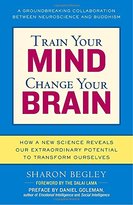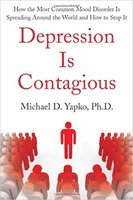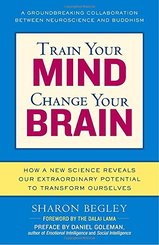|
A frequent issue for those struggling with social skills is the question of how much to share. How long should your answer to the question last? How many reasons should you give if you’re late? What private information should you share with others?
Of course, the answer, as always, is that it depends. But, I not going to leave you with that. There are basic rules, and clues that you can read. For example, a standard answering machine message is set to record a standard message. If you always run to the end of the time limit, that’s a good clue that you’re talking too long. A voice mail or answering machine is set up to take basic information. Your name, your number, a brief reason why you’re calling. Maybe, to make life easy for the other end, you can repeat your name and number. Don’t give a bunch of reasons, don’t share all the details, don’t have the conversation without the other end there to listen. It’s the same with emails. Take a look at a series of back and forth email correspondence. Is your answer always the long one? Does your email go to auto shutdown when you’re writing? It’s an email, not a thesis. If you’re speaking face to face, the clues are a bit more direct, and easy to read once you know how. If your listener is nodding, saying things like “um-hum” or “yeah” that’s a good clue that they’re listening. If they look around the room, over your shoulder, or at their watch, you’ve lost them. Stop. (Maybe they’re captivated by your topic, but they just need to make sure they’re not late to pick up the kids. That’s OK. You should still stop talking. If they want you to continue, you’ll get a very solid clue like, “Go on, what were you saying?”) When people are interested in your topic, they should be asking questions, or contributing from their point of view. That’s great, it’s a sign that the conversation is flowing well. Which of course, leads right back to the idea of eye contact. Part of the reason that the speaker periodically looks at the listener is to gauge if they’re still listening. If eye contact is tough for you, you can still look over at the forehead or eyebrows. Finally, the basic rule is that the closer the relationship, the more intimate the details you share. So it’s probably OK to tell your mom about your latest bout with the flu, but for the office, “I’m feeling much better, thanks!” may be just right. Social skills get more subtle once kids reach high school, and that’s a time when many teens with autism, Asperger’s and ADHD really start to struggle with friends and peer relationships. Often, these kids have gone through the basic social skills training at school or in a social skills group when they were younger. By now, they want nothing more to do with a formal class, but they’re still missing out on some of the more subtle details.
I thought TV episodes might be a useful, fun way to help teens look at social signals. Although the plots of a lot of teen programs are pretty unrealistic, the situations more mature, and the conversations often more adult and introspective than teens really use, the settings are familiar, and the programs are something teens will relate to. They also tend to use body language, but in a bolder, broader way, which can be easier for teens on the spectrum to pick up on. Finally, because these scenes are online, you can watch and rewatch as many times as you want to catch the details, even muting the dialogue to shift focus to the nonverbals. This week I’m looking at some personal space and nonverbal communication issues as illustrated by the show Glee. You can see these episodes on Hulu.com for free. Note to parents: some of you may object to the more mature themes in this program. I’ll be looking for other shows to comment on as well, but before banning the program, consider if this is something all the other kids at school are watching. Not having seen a popular show can make it hard for kids to fit in. You can watch together, and discuss issues, such as is this scenario realistic, or appropriate, or does this fit with your own values. (If you have a particular show that’s online that you’d like me to analyze, please comment here, or send me an email.) In Glee, Season 1 Episode 9, Wheels, the show starts with scenes of cheerleading practice. Sitting alone in the bleachers is blonde Quinn, soon to be joined by tall, dark haired Finn. (If you’re new to this show, it might not be obvious from the ways they’re acting that these two are a couple.) Notice the tense body language. As Finn approaches, he doesn’t greet Quinn, he just sits down, at a distance that’s not typical for a dating couple having a one on one conversation. Quinn doesn’t turn to Finn, she doesn’t lean toward him or adjust her body posture, she barely even looks at him. Before anything is said, and without knowing anything about the plot, it’s clear that this pair is not feeling close and connected. Throughout their scene together, Quinn only turns her eyes or occasionally her face to Finn, never her shoulders or the rest of her body, a clear sign of discord between the pair. Now look at Season 1, Episode 10, Ballad. The show starts with all the students sitting on the bleachers, spaced evenly with almost mathematical precision. (Your teen may not be aware of this spacing rule, but it’s pretty consistent in our culture. People tend to space themselves out fairly evenly, sitting closer to close friends, but not sitting next to strangers unless the space gets more crowded. Think about a movie theater. If it’s almost empty, sitting in adjacent seats is something only friends do. Strangers space themselves out. As the theater fills, it’s not threatening or inappropriate to sit next to strangers.) The exception to the Glee bleacher spacing, which may not be obvious to kids who don’t pick up on social cues, is Quinn and Finn, sitting together as a couple. Finn’s posture isn’t that different than in the previous episode, but now Quinn is leaning into Finn, almost draped on him. Clearly, she is in a different mood than the previous episode. Notice also that the rest of the students are angled slightly toward the center, indicating some cohesion, and friendship alliances can be gauged just by noting who is sitting together. When the teacher asks, “Who knows what a ballad is?” notice how Rachel immediately thrusts up her hand with too much enthusiasm. Can your child glean information about Rachel’s character from this simple action? Well, I’ve watched about 5 minutes of TV, and written a full post on the details. What details can you and your teen pick up from body language? Depression and antidepressants are big news this week with Newsweek’s February 9, 2010 story by Sharon Begley, “The Depressing News About Antidepressants: Studies suggest that the popular drugs are no more effective than a placebo. In fact, they may be worse.” (Sharon Begley also wrote the book Train Your Mind, Change Your Brain, which I discussed in an earlier post.)The article goes on to explain the placebo effect, and what analysis of numerous studies on antidepressants, both those published and not published are showing about the effect of the drugs, and the often superior results of psychotherapy. Depression is a concern for many on the Autism Spectrum, with almost a third of individuals with autism and Asperger’s also dealing with depression. (Mohammad Ghaziuddin’s Mental Health Aspects of Autism and Asperger Syndrome has a good review on this topic if you’re looking for details.) Social isolation, difficulty managing relationships, chronic stress from sensory issues, and practical matters like underemployment can all be contributing factors. For more info, you can find an earlier article I wrote on "Depression with Asperger's Syndrome and Autism". Dr. Michael Yapko, a Clinical Psychologist and MFT, has published and spoken extensively on the ideas that depression is the result of many lifestyle and social choices and curing depression does not come from a pill. He is the author of Depression Is Contagious, which I haven’t yet read, but it’s in my stack of books. You can hear an interview of Dr. Yapko, where he discusses his book and theories on the importance of social connections and good problem solving skills in managing depression. Please note: If you’re currently taking antidepressants and these articles are concerning to you, don’t just stop taking them. Please talk to your prescribing physician. It can be very dangerous to stop taking any prescribed medication, or to alter the dose, and any changes to medications should be made under a doctor’s supervision.
Mirror neurons, structures in the brain that fire not just when performing an activity, but also when watching another perform that same activity, are being researched by neuroscientists around the world. What is of interest here regarding mirror neurons is the theory that differences in the mirror neuron system may account for some of the symptoms seen in Asperger’s and autism.
Many of my clients on the autism spectrum are very interested in learning about the technical and medical issues surrounding their diagnosis. I’m always excited when I find good, straightforward information on these topics. Rather than attempt to re-explain what the researchers already have explained in clear and understandable terms, I’m going to just direct interested readers to these links. For a basic discussion of mirror neurons, go to TED, and listen to VS Ramachandran’s The neurons that shaped civilization. Ramachandran doesn’t discuss autism in this brief talk, but his 2006 article in Scientific American, Broken Mirrors: a theory of autism with LM Oberman. discusses autism in depth. Finally, if you’re still looking for more, Nova has a presentation online about how mirror neurons work. Maturing and learning don’t stop at 18, whether you’re on the autism spectrum or not. As any parent of a college age student can attest, there’s a great deal of maturing that takes place after high school. As we move through adulthood, that continues to be true. I think this continued development is especially true for those with autism and Asperger’s. Neuroplasticity, the ability of the brain to reorganize and restructure itself both physically and functionally, is now known to be possible at any age. Although young brains seem to be the most capable of gross reorganization, a growing body of research is showing that the brain continues to be plastic throughout life. An informative, as well as entertaining and very readable, discussion of neuroplasticity and new discoveries surrounding the topic is presented in Train Your Mind, Change Your Brain, by Sharon Begley. Begley, a science writer for Newsweek, and before that, the Wall Street Journal, presents some of the new research and discoveries about neuroscience. The data is presented against the backdrop of Dharamsala, India and the 2004 Mind and Life meeting between Western researchers and the Dalai Lama. Begley explains numerous examples of how animal and human brains are impacted and changed, both in function and structurally, through our experiences, sensations and even thoughts. The idea of a primate generating new neurons is interesting, but what does it mean in practical terms? Plenty. Right about the time I was reading Begley’s book, the 10th anniversary issue of Autism Asperger’s Digest (November/December 2009) came out. The entire issue is available online, and there are a number of interesting stories from individuals looking at their progress over the years. The one that most elegantly illustrates this idea of lifetime neuroplasticity is Temple Grandin’s The Way I See It column, "Learning Never Stops". Grandin talks about how she and others on the autism spectrum continue to learn how to communicate, behave, and expand their minds, not just as children, but throughout their lives.
When I work with young adults and college students with autism and Asperger’s, I’m continually reminded of this concept. I think parents sometimes worry that their high school age children aren’t on track for transitioning to adult independence. Certainly, in some cases, that’s true, but so often, these young adults are continuing to make rapid advances in their social skills, executive functioning and emotional management. Kids who aren’t ready for a job or college right after high school can continue to mature and learn and be ready a few years later. As Grandin and Begley both illustrate so clearly, the key to this growth is continued exposure to new experiences, new challenges and the opportunity to keep learning. Holiday gatherings can be wonderful, filled with fun and family, food and laughter. But some people find the holidays more stressful than relaxing. Many individuals on the autism spectrum struggle with sensory overload, especially with extra guests in the house, loads of noise and excitement. For others, the family reunion can bring up all sort of old disappointments and hurt feelings. Everyone wants a great holiday, but you might need to take special care to make sure you have the best time possible.
Plan Time for Yourself If you find yourself getting overloaded, it’s perfectly acceptable to step aside and spend some time alone. Go for a walk, find an empty spare room, or offer the do all the dishes by yourself. Family members may pressure you to join in the “fun” but it’s fine to say that you just need a bit of time to yourself. Choose Your Battles You’re an adult now. It’s OK if your family doesn’t understand you, or if you can’t convince them that you’re right. Agree to disagree. Some battles are just not worth the emotional energy. No one has to get all their needs met by their family, friends can offer support and understanding you can’t get from some of your family members. If It’s Too Much, Go Home Early Again, you’re not required to stay with the family on holidays. It’s your job as an adult to take care of yourself. Come late and leave early if that’s the best way for you to take care of yourself. Look for the Bright Spots Try to find an activity that’s enjoyable. If the long family conversation is too much, go sit at the kids’ table and be the fun adult. Or, pull out old pictures and reminisce with your sibling about funny childhood times. An older relative may have a lot of interesting memories about their youth and family and this can be a more low pressure way to connect. Try Giving Sometimes the best way to manage when you’re not getting what you want is to shift focus on to more positive areas. Think about all the things you’re grateful for this year. Look around and see what you can do to help out. Above all, remember that as an adult it’s your right and responsibility to take care of yourself. Do what you need to to feel good about this holiday. Thanks for reading this blog, and Happy Thanksgiving! Anger management skills are important for everyone, not just those with Asperger’s and autism. But for those on the spectrum, managing anger may be especially difficult. In my post of 10/1/09, I discussed understanding anger. In today’s post, I’ll be discussing the actual physical sensation of anger.
Like all emotions, anger comes with a physical feeling. And that’s important, because often that physical feeling is the first subtle clue that the emotion is present. Many individuals experience anger as a tightness in the hands, arms, and jaw. Some people may get a stomachache or a headache. What’s of interest is how you specifically experience anger. For many of my clients on the autism spectrum, they are more comfortable with reason and intellect, and may be less attuned to the sensations in their bodies. For those with sensory issues, the physical sensations in their bodies may be so overwhelming that they try to tune them out. Whatever the reason, disconnecting from the physical may mean that subtle, early signs of anger are not recognized. It’s possible to re-experience all the feelings of anger just by remembering an upsetting event. This may be the perfect opportunity to tune in to your experience, without feeling as overwhelmed as when you’re actually in an angry situation. The next time you’re remembering something that made you angry, close your eyes and scan your body. Note what feels different. This is how your body reacts to anger. Rebecca Saxe is a neuroscientist at MIT, studying Theory of Mind. Theory of Mind is the understanding about how we think about ourselves and others, or as Simon Baron-Cohen phrased it in Theory of Mind in Normal Development and Autism, (2001), “to be able to reflect on the contents of one’s own and other’s minds.” This is an important concept from the viewpoint of autism and Asperger’s, because many researchers attribute deficits in Theory of Mind to some of the struggles those on the autism spectrum might be having.
Rebecca Saxe has been researching the brain using fMRI, and identified the region, called the Right Temporo-Parietal Junction, that is activated when we’re thinking about other’s thoughts You can hear a brief, but informative and entertaining talk by her on Ted.com, titled How We Read Each Other’s Minds. She talks about her work and also demonstrates some interviews with children of various stages of development. You have to register, but the site is free, and full of fascinating presentations. Anger management is an problem for many individuals, whether or not they have Asperger’s or an ASD. It’s one of the topics that gets searched for most frequently by readers of this blog. In an earlier post I referenced an Anger Management article I wrote for Autism Asperger’s Digest Magazine, but until now I haven’t written anything on anger management specifically for this blog. Because anger management is such a big topic, I’m not going to attempt to cover it all in one post.
We’ve all had that feeling of anger growing, and getting out of control. Sometimes when we lose our tempers, a part of us may even know it’s happening, but the anger still seems to have taken on a life of its own. Anger management techniques can help us manage before the situation gets out of control. With my therapy clients who are dealing with ADHD, autism, or Asperger’s and anger, I start by exploring what anger is. Most important: anger is not a bad emotion! Anger is powerful, strong and it drives people to make changes in situations that just aren’t working. So the point is not to eradicate anger, but to control it. To manage it. Another important fact about anger is that the emotion often exists concurrently with other emotions. People may react with rage when what they’re really feeling is disappointment, shame or guilt, fear, or sadness. All of those other emotion can have an aspect of weakness and powerlessness. It may feel safer and more empowered to shift that helpless feeling over to the power of rage. I often ask clients to reflect on what the emotion behind the anger is. What’s the uncomfortable feeling the anger covers? Next we’ll explore the physical sensation of anger and how important that knowledge can be for managing it. Please check back for further posts! Raising a child with special needs like an Autism Spectrum Disorder (ASD), Asperger’s, or Attention Deficit (ADHD or ADD) is a challenge, and too often parents don’t notice all the progress they’re making. Instead the situation seems overwhelming and hopeless, and it’s as if things will never get easier for your family. The reality is that these kids do make progress. But, progress may come slowly, or in a “two steps forward one step back” pattern that may obscure all the growth. That’s where behavior charts can be so helpful.
Behavior charts can be a great tool for keeping track of how your child is doing. They can provide feedback to teachers, doctors or therapists, and most importantly, they’ll tell you, the parents, how things are going. Free behavior charts can be found all over the internet and you can download a basic, easy monthly behavior chart on my website as well. Just find something to suit your needs, one that won’t be too much effort to fill out, but will provide you with the information you need. If your child is on medication, charting behavior is crucial. Psychiatrists and pediatricians are terribly overloaded and appointments can be brief and infrequent. Track your child’s behavior, sleep, and school results, and make note of any special circumstances. Did your child start a new medication, forget a dose, have a substitute at school? Write that down. Bring the chart to the doctor’s office so they can see exactly what’s going on. Prescribing medication is very difficult and you want your doctor to have all the information possible. Sometimes it can be very helpful for your child to have a visual measure of his or her own progress. If the chart is being used as a motivator or to track rewards, it’s best to find something bright and colorful. There are many attractive charts online designed specifically for different ages. Teenagers are not too old to benefit from a behavior chart! They provide a visual, concrete image that can be much more meaningful than a generalized comment. Just avoid childish graphics, and consider displaying it in a more private location. After the chart is filled out, please don’t throw it out! File it away in a drawer and look back at it once in a while. Years from now you may be amazed to see what issues you were dealing with and how far your child has come. (For a few examples of successful individuals with diagnoses of autism, Asperger's or ADHD, check out these earlier blogs. Ari Ne’eman is an autism advocate. John Elder Robison, Blake E. S. Taylor, and Zosia Zaks are all successful authors with various diagnoses. Read the comments from jypsy on her son and his running blog, as well as links to her You Tube videos.) |
Patricia Robinson MFT
I'm a licensed therapist in Danville, California and a coach for Asperger's and ADHD nationwide. I work with individuals of all ages who have special needs, like Autism Spectrum Disorders, ADD, ADHD, and the family members and partners of special needs individuals. Archives
February 2015
Categories
All
|




 RSS Feed
RSS Feed